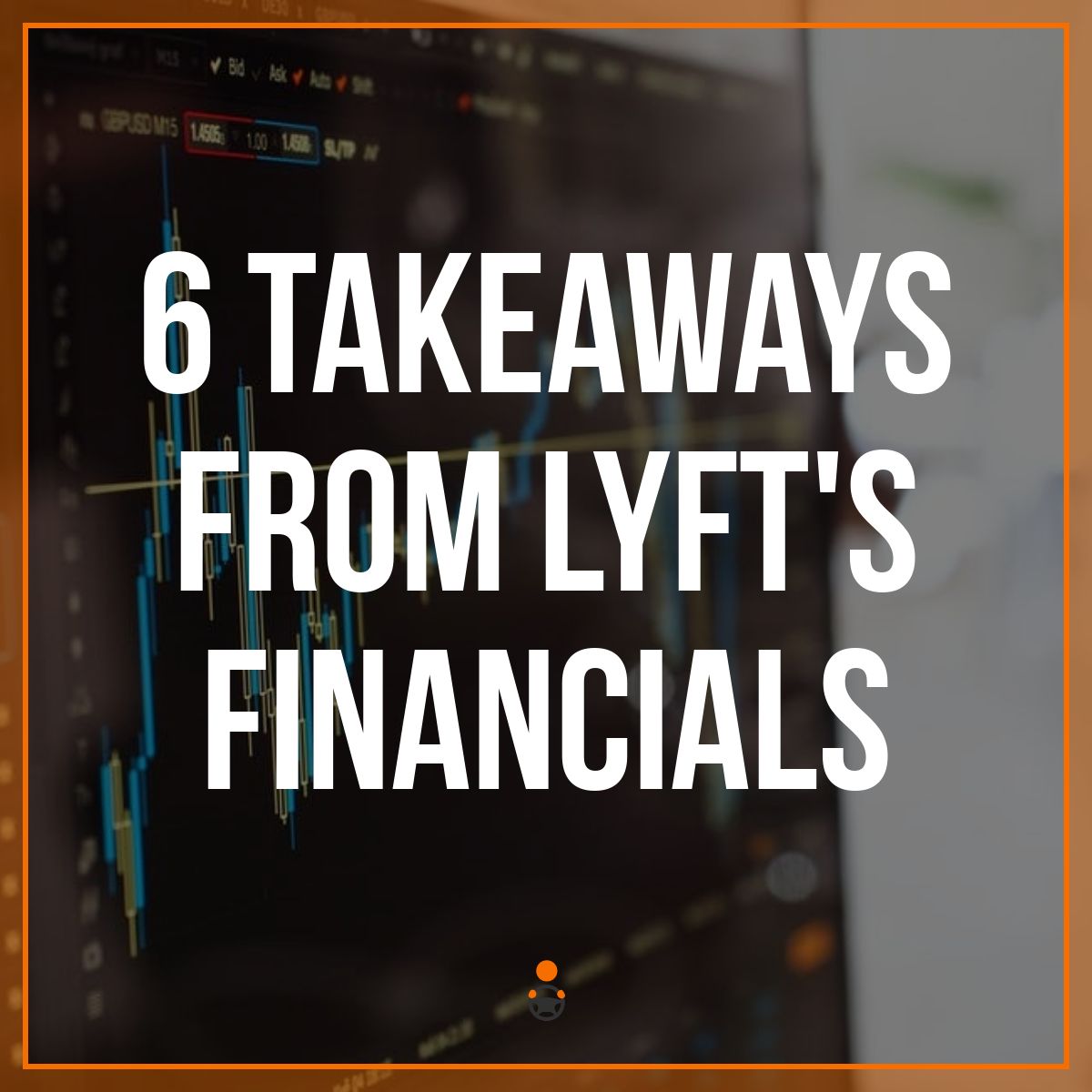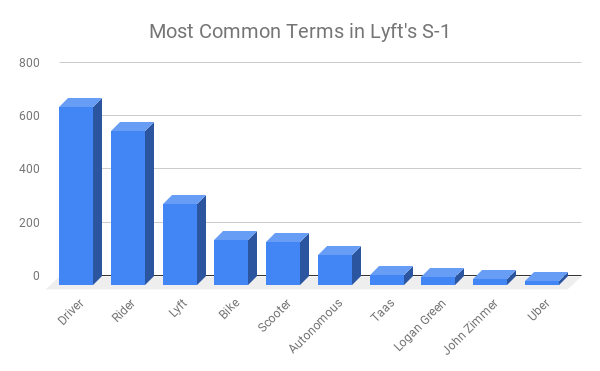On Friday, Lyft passed Uber in the race to IPO and officially filed their S-1 with the SEC. Normally, legal documents like this can be pretty boring, but there was a ton of interesting information in this one, and I finally got a chance to dig in over the weekend. There’s still some marketing and PR fluff in the doc, but it also reveals all of the financials and more that we’ve been wondering about for years.
You can read the official document here or read on for a list of my top six takeaways.

1. Loyal Lyft Drivers are Going to Get Paid!
As part of Lyft’s IPO, some drivers are actually going to get cash bonuses and an option to buy into Lyft’s IPO. But the catch is that you’re going to have to have some pretty high ride counts. Here’s an excerpt that was sent to drivers who qualified (you can see the full e-mail here):

This was a nice surprise since most drivers expected to get nothing. And while I was a little confused by this e-mail at first, if you read the fine print, drivers get 1 of the three bulleted bonuses (highest one) and then they get an additional $5,000 if they’ve ever served on the DAC. Bet you wish you applied when we told you to now, huh? (By the way, Lyft’s currently accepting Driver Advisory Council applications in 40 new cities – you can apply to become a DAC member here.)
Obviously, this plan is rewarding the most loyal and veteran drivers, which is the way it should be. 10,000 rides is probably tough to achieve outside of top markets like SF or LA though, so I’ll be curious to see how many drivers qualify and how it breaks down. My only complaint is that it would have been nice if they did a tiered structure from 10,000 to 20,000 rides with $1,000 for every 1,000 trips, since I can’t imagine there are many drivers with 20,000 trips (we did interview one of them though!).
Our own Jay Cradeur has 14,000 trips with Lyft, so stay tuned for an article on his experience and let us know in the comments below if you think he should take the cash or invest in the IPO?!
2. Lyft Lost Almost $1 Billion in 2018
We often make fun of Uber for losing lots of money, but it’s probably no surprise that Lyft also loses a ton of money. Chuck probably said it best with this tweet:
How the hell do you loose money when you don’t pay for the cars, gas, maintenance. Just sit and collect 50% of what we worked for. Stop wasting money on other shit and you would be fine, and could pay your drivers
— Chuck Packwood (@chuckpackwood) March 2, 2019
It’s pretty crazy how much money both these companies are losing despite not owning a single vehicle. And I’m still not convinced that either company will ever be able to turn a profit, but I’m also not sure it matters.
3. Uber is 5-6x Bigger than Lyft
We’ve always known Uber is bigger than Lyft, but if you compare the most important metrics, you see just how much bigger Uber is than Lyft (revenue and gross bookings). However, you also see that Uber’s losses don’t look so bad compared to Lyft:

You’d expect Uber to have the same net loss multiple (5-6) as revenue/gross bookings, but they’re much more efficient. I suspect this is because it’s costly to be number two and the only way to really gain market share is through steep discounts.
4. This is the Golden Era of Rideshare
As I always say, this is the Golden Era of rideshare. https://t.co/KwW4UVsKsg
— Harry Campbell (@TheRideshareGuy) March 2, 2019
Uber and Lyft provide millions of jobs for drivers around the world and have revolutionized the way people get around their cities. But it turns out that it’s not so profitable of a business since Lyft is losing $1.40 on every single ride! So I think we all need to take a break and just say thanks to the Venture Capitalists who have been subsidizing the industry for the past 7 years.
5. Lyft Has 1.9 Million Drivers?
Lyft said it served 30.7 million riders in the US and Canada in 2018 and that it had 1.9 million drivers last year. It also handled more than 1 billion rides.
— Dara Kerr (@darakerr) March 1, 2019
We’ve estimated that there are close to 2 million Uber drivers in the US depending on your definition of ‘active’, so I don’t see how Lyft could have a similar number if they’re doing 1/5th of the rides. Their 2019 ‘Impact Report‘ says they have only 1.5 million drivers, which still seems high, but it also says that 91% of drivers drive 20 hours a week or less, which seems fishy too. My guess is that they’re using a very generous definition of ‘active driver’.
(And to make things more confusing, page 125 says they had 1.1 million drivers who provided rides as of the end of fourth quarter in 2018, getting closer…)
6. ‘Driver’ was the most common word in Lyft’s S-1
For all you drivers who missed out on the 10,000 ride threshold, you can take consolation in the fact that Lyft mentioned the word driver 666 times in their S-1. Some other standouts below:

Honorable Mentions
14 Cents from every ride goes to Amazon Web Services (AWS)
Pretty amazing re @lyft. Following a string of tech IPO disclosures this year, people will really start to appreciate that while it’s more efficient than owning the metal, the ☁️ isn’t cheap! https://t.co/UMThn9yqTb
— megan quinn (@msquinn) March 3, 2019
People do not like the term TaaS (Transportation-as-a-Service)
they say Lyft is the nicer ride service, but there’s nothing nice about making up a term like TaaS and subjecting us to it 35 times in the S-1 https://t.co/vKDpJNzpyw pic.twitter.com/gVocRNwuyp
— Ellen Huet (@ellenhuet) March 1, 2019
Lyft files for IPO on the same day Uber was founded
Ok this is pretty funny..
Lyft files their S1 on the anniversary of Uber being founded , expert level troll move 😂 https://t.co/KZkBUCDSXG
— Shai (@shaig) March 1, 2019
Drivers, what do you think about Lyft’s financials and what surprised you most?
-Harry @ RSG
[yasr_overall_rating size=”medium”]




